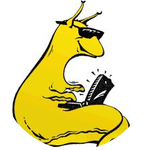Project Results
About This Project
Our team seeks to engineer a micro organism that will produce the high-energy chemical butanol when the organism is fed cellulose. A mixture of 85% butanol and 15% gasoline produces a liquid fuel that can be used in current infrastructure and lowers our carbon footprint. By producing a cellulose based liquid biofuel we hope to shorten the carbon cycle and thereby directly combat climate change and address the growing global energy demand.Ask the Scientists
Join The DiscussionWhat is the context of this research?
Biofuels like ethanol have received much attention in
recent years as demand for cleaner renewable energy increases. Liquid fuels are vital for supplying the growing global energy demand. Conventional biofuel production centers around biomass like corn, sugar cane, and soy that is fed into factories for processing. This process can be expensive and the starting materials often compete for land with food stocks. Use of bio-ethanol is hindered by its low energy content and water absorption. Butanol provides comparable amounts of energy to gasoline, can be used in current infrastructure, burns substantially cleaner, but is difficult to produce conventionally and remains expensive. Emerging technologies are now facilitating high value chemical production at a fraction of the cost.
What is the significance of this project?
Our project will provide a cheaper way of producing the
high value chemical butanol that can initially use wood and paper waste products to provide a source of renewable liquid energy that will reduce our use of petroleum fuels. Our system will utilize microbial fuel production to convert cellulose, wood waste, into butanol. The use of ionic liquids to extract cellulose from plant material has greatly reduced costs. We will utilize an organism that lives in high ionic environments allowing us to reduce preprocessing, thereby reducing the cost of fermentation. By coupling the emerging technology of synthetic biology with a renewable source of feedstock, we can take responsibility for our energy needs while preserving our planet.
What are the goals of the project?
- Engineer Haloferax volcanii to produce butanol from glucose.
- Characterize the synthetic metabolic pathway and optimize through further engineering.
- Present our findings at the iGEM competition and publish our results.
Budget
The funds will be used to pay for lab supplies, personal
protective equipment, chemical analysis equipment that we will use to measure things like the amount of butanol produced by our microbe and others substances of interest. Many analytical chemistry tools operate on a pay by use format and we will need to use this equipment to monitor progress and prove our project is successful. We will use the funds to pay for synthetic DNA which makes our project possible. Without synthetic DNA we would not be able to give our microbe new abilities, like producing butanol. We will design the synthetic DNA that we need and we will order the material from a supplier.
Meet the Team
Team Bio
Our team is composed of undergraduates, graduate students, and professional scientists. Our members are dedicated to a holistic approach to science. We have incorporated ethicists, artists, science communicators, and social scientists on our team to help produce a socially responsible project. Our main goal is to directly impact the leading challenges of our time, climate change and sustainably meeting the growing global energy demand. Our members are working full-time, around the clock, in a volunteer capacity. The UCSC iGEM team aims to lead by example and show the world how synthetic biology can be the ultimate green technology.UCSC iGEM
We are the iGEM team from UC Santa Cruz!
David Bernick
Dr. B is our amazing mentor. He guides us through each aspect of the iGEM process and synthetic biology project, without ever offering TOO much help. Dr. B is the voice of reason (sometimes) and (always) keeps us focused on our ultimate goal: helping people by using synthetic biology.
Additional Information
Here is a photo of our sample site for organisms that live in extreme environments, specifically high salt environments. The color is actually due to a living micro organism!:https://drive.google.com/file/d/0B1xTl8XG4Ujlajcyb...
Here are a few members surveying the sample site:
https://drive.google.com/file/d/0B1xTl8XG4Ujld1VwV...
Here is a photo of our home, our lab!
https://drive.google.com/file/d/0B1xTl8XG4UjldkZJU...
Check out a photo of a few of our members in our lab:
https://drive.google.com/file/d/0B1xTl8XG4UjlTVVMR....
Project Backers
- 38Backers
- 102%Funded
- $11,310Total Donations
- $166.05Average Donation

